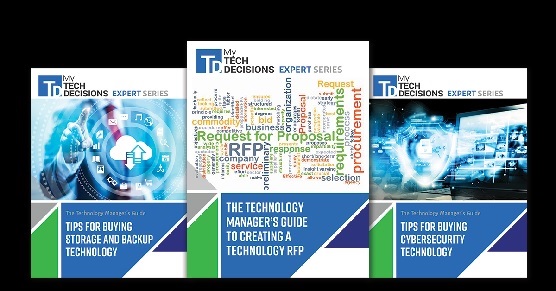A topic of discussion that has become increasingly prevalent in the corporate market, as well as with the public in general, is finding ways to reduce our impact on the environment. This means reducing energy consumption, reducing the negative effects of our processes on the world around us, improving emissions, recycling materials, monitoring use of gas and oil, and improving the quality of the world in general (or reducing the amount of harm that we are doing). Essentially, this means reaching LEED certification.
The reasons for monitoring our environmental impact are plenty, and have been discussed in countless publications, documentaries, and speeches. The prevailing thought is that the world will not be able to survive, and we will not be able to survive on it, if we continue the same processes that have adversely affected the globe. Estimates of how long we can continue vary, but generally it is agreed that something has to be done sooner rather than later. The reasoning is sound, but may not be enough to convince companies to spend money implementing the technology they would need to meet the lofty goals of saving the environment.
However, there are practical reasons that directly affect a company’s bottom line that often aren’t considered in these discussions. Reducing energy consumption saves money in utility costs. The use of ambient light and timed lighting units saves money. The same can be said for automated HVAC control systems that only heat or cool a building during hours when employees are around to need the temperature adjusted. The same goes for sewage; having an efficient system saves on water consumption, which saves on water costs, a win-win for the environment and the company.
Noting that many companies need an incentive in order to be proactive about their environmental effects, the United States Green Building Council (USGBC) has created their Leadership in Energy & Environmental Design (LEED) certification. LEED is a green building certification program that recognizes best-in-class building strategies and practices. To receive certification, building projects satisfy prerequisites and earn points to achieve different levels of certification.
Why Go Green?
“LEED buildings are not only good for the planet, they are also good for a company’s bottom line and the health of its employees,” says Marisa Long, Communications Director for the USGBC, through e-mail. “LEED buildings have demonstrated tremendous cost savings in energy over time, and employees working in LEED buildings are proven to be healthier over time, which translates into a more productive and positive workforce. Public perception is also significantly improved for companies that seek out LEED certification, as consumers tend to view corporations that take real responsibility for our shared planet in more positive terms.”
The top reasons for building green are client demand and market demand. According to a 2012 McGraw Hill study, between 2008 and 2012, there was dramatic growth in the percentage of firms that built green to achieve lower operating costs (increased to 30 percent from 17 percent) and gain a branding/public relations advantage (increased to 30 percent from 22 percent).
LEED certification also saves money. The cost per square foot for buildings seeking LEED certification falls into the existing range of costs for buildings not seeking LEED certification and LEED buildings save money on operating costs and ROI. Benchmarking energy and water use is a critical tactic that is saving companies millions of dollars, year over year, simply by reducing costs through saved energy, water and other resources.
“The green building best practices are migrating towards becoming law and all US government buildings are mandated LEED gold minimum,” says Jamie Finnegan of Almo Pro A/V That standardization and those mandates are expanding almost by the month in terms of the footprint of these mandates across the country.”
In addition, reducing energy consumption has gone from being a “good idea” to a business necessity. It’s not just that energy conservation has a positive lifecycle cost impact, but also that it offers a direct reduction in an organization’s “carbon footprint.” A number of studies have shown that energy conservation not only offers a positive “life-cycle-cost” investment, but that it’s the most cost-effective way to lower society’s carbon dioxide output.
How Do We Get Started?
LEED certification falls into five categories. Building design and construction applies to building that are being newly constructed or going through major renovations. Interior design and construction applies to projects that are a complete interior fit-out. Building operations and management applies to existing buildings that are undergoing improvement work or little to no construction. Neighborhood development applies to new land development projects or redevelopment projects containing residential uses, nonresidential uses, or a mix. Projects can be at any stage of the development process, from conceptual planning to construction. Finally, homes applies to residential applications.
To get started you need to register your projection with the USGBC. Once you submit your registration form and payment, your project will be available in LEED Online, where you’ll have access to a variety of tools and resources necessary to apply for certification. Prepare your application by identifying specific LEED credits to pursue, collecting information, and preparing documentation to include with your application. Once you submit your application, your design and/or construction will be reviewed and awarded points based on the USGBC certification guide.
Points are given based on credit categories. Within each of the credit categories, there are specific prerequisites projects must satisfy and a variety of credits projects can pursue to earn points. The number of points the project earns determines its level of LEED certification. 40-49 points earns a Certified status, 50-59 earns Silver, 60-79 earns Gold, and 80 points or more will earn your project a Platinum certification.
In addition, the USGBC offers exams for different credentials to distinguish individuals that are apt in the field to help work toward LEED certification. Look for help from LEED Green Associates and LEED AP specialists. They have been certified to help you reach certification.
If you enjoyed this article and want to receive more valuable industry content like this, click here to sign up for our digital newsletters!











Great initiative and informative article. As the owner of an HVAC company here in Las Vegas, NV we need to spread the word on the opportunities that are available go green in every industry.
Thank you for the post on why a company should seek LEED certification. I think going green is a great way to start saving money, especially for companies. You can start a company off strong making sure the bills and operating costs are low to begin with.